




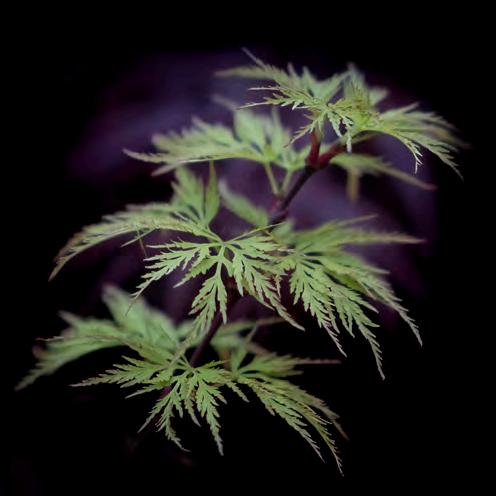

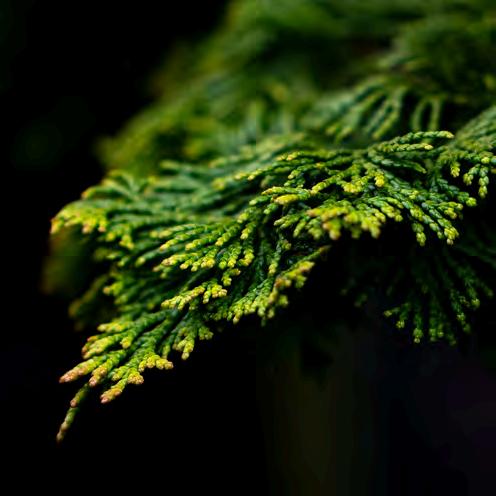
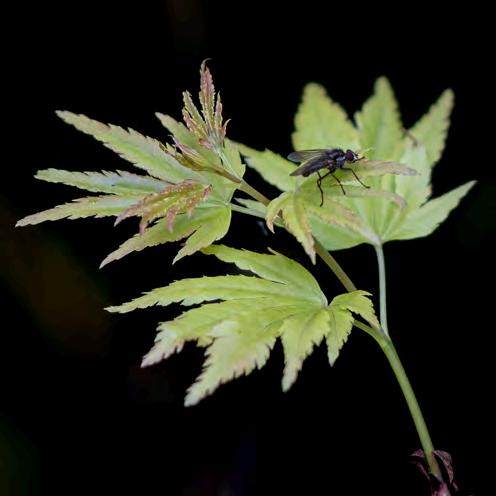



These plants are renowned for their distinctive leaf shapes and stunning fall colours, which can range from vibrant reds to deep purples, though some varieties like the one in your image also display bright colours during other seasons.
Origin and Habitat: Native to Japan, Korea, and China, Japanese Maples are used extensively in landscaping throughout temperate parts of the world, appreciated for their aesthetic appeal and relatively small size.
Growth and Form: These trees typically grow as small deciduous trees or large shrubs, often reaching between 4 to 12 meters in height. They are known for their smooth, gray bark and a layered, feathery form.
Leaves: The leaves of the Acer palmatum are palmate, meaning they radiate from a single point and usually have five or seven lobes. They are highly ornamental, with colours that change seasonally.
Cultivation: Japanese Maples prefer slightly acidic, well-drained soils and perform best in partial shade, though many varieties can tolerate full sun if kept well-watered.
Uses: They are primarily used for decorative purposes in a variety of settings including residential gardens, parks, and are a staple in Japanese garden design. They also feature prominently in bonsai culture due to their adaptability and striking appearance.
They hold a prominent place in traditional Japanese gardens, symbolizing peace, beauty, and the changing seasons. These gardens, known for their meticulous design and profound symbolism, often feature Japanese Maples as focal points due to their striking aesthetic and the deep cultural resonance they carry.
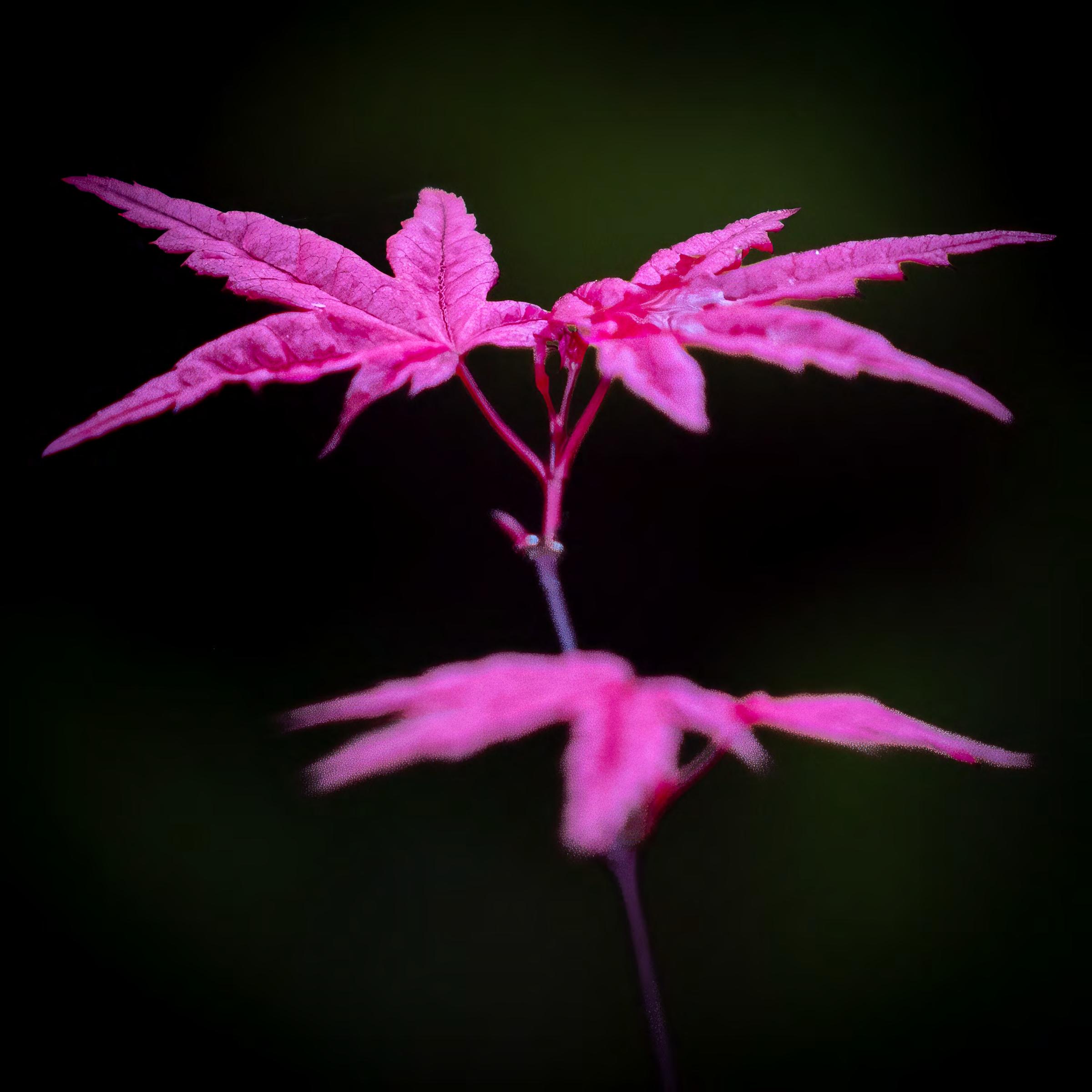


Aesthetic Appeal: Japanese Maples are prized for their graceful form and vivid foliage. Their variety in leaf shape, size, and spectacular seasonal colour transitions from bright greens in spring and summer to fiery reds and oranges in autumn embody the Japanese aesthetic principle of 'wabi-sabi', which appreciates beauty in imperfection and transience.
Symbolism of Seasons: The changing leaves of the Japanese Maple reflect the passage of time and the natural cycle of life, death, and rebirth. In Japanese culture, this mirrors human life and the impermanence of the world, echoing themes common in many traditional poems and artworks.
Elements of Zen: In Zen Buddhism, which has a strong influence on the design of Japanese gardens, the Japanese Maple can represent endurance and grace. The way these trees bend without breaking can be seen as an allegory for resilience and flexibility in the face of adversity.
Visual Harmony: Japanese Maples are often used to create balance and contrast. Their soft, fine leaves can soften the hard lines of stone elements and water features, while their dynamic seasonal colour can serve as a visual highlight within the more restrained green palette of a traditional garden.
Spatial Composition: In Japanese garden design, every plant and stone is placed with intention. Japanese Maples are sometimes planted to frame a view, guide the visitor's gaze along a garden path, or as a solitary specimen in a courtyard, where their detailed beauty can be appreciated up close.
Bonsai and Niwaki: Beyond the garden setting, Japanese Maples are popular in bonsai— the art of growing miniature trees. They are also shaped into niwaki, where they are pruned intricately to emphasize their natural form and to echo the broader landscape in miniature.
Japanese Maples serve not just as plants within these gardens but as expressions of philosophical ideas, blending art, nature, and spirituality in ways that are both visually striking and deeply meaningful. Their presence in a garden is not merely ornamental but evocative, aiming to inspire reflection and a deeper connection with the natural world.
Latin Name: Sedum species come in a variety of forms, but many common garden varieties are classified under the genus Sedum.
Characteristics: Sedum plants are distinguished by their succulent leaves, which are adapted to store water, making them exceptionally drought-tolerant. They often have thick, leafy stems that can range in colour from green to red, depending on the species and environmental conditions.
Japanese pes, or Acer palmatum, hold a prominent place in traditional Japanese gardens, symbolizing peace, beauty, and the changing seasons. These gardens, known for their meticulous design and profound symbolism, often feature Japanese Maples as focal points due to their striking aesthetic and the deep cultural resonance they carry.
Cultural Significance:
Growth and Form: These plants typically form low, spreading mounds and are often used as ground covers in garden settings due to their low maintenance needs and spreading habit. Some Sedum species grow in more upright forms and can reach higher elevations.
Flowers: Sedum plants produce star-shaped flowers in clusters, commonly appearing in late summer to autumn. The flowers range in colour from white and yellow to pink and red, attracting bees, butterflies, and other pollinators.
Symbolism of Seasons: The changing leaves of the Japanese Maple reflect the passage of time and the natural cycle of life, death, and rebirth. In Japanese culture, this mirrors human life and the impermanence of the world, echoing themes common in many traditional poems and artworks.
Aesthetic Appeal: Japanese Maples are prized for their graceful form and vivid foliage. Their variety in leaf shape, size, and spectacular seasonal colour transitions from bright greens in spring and summer to fiery reds and oranges in autumn embody the Japanese aesthetic principle of 'wabi-sabi', which appreciates beauty in imperfection and transience.
Cultivation: Sedum is extremely easy to grow and can thrive in poor soil conditions, as long as there is good drainage. They prefer full sun but can tolerate partial shade. These qualities make them popular in rock gardens, green roofs, and xeriscaping.
Elements of Zen: In Zen Buddhism, which has a strong influence on the design of Japanese gardens, the Japanese Maple can represent endurance and grace. The way these trees bend without breaking can be seen as an allegory for resilience and flexibility in the face of adversity.
Role in Garden Design:
Visual Harmony: Japanese Maples are often used to create balance and contrast. Their soft, fine leaves can soften the hard lines of stone elements and water features, while their dynamic seasonal colour can serve as a visual highlight within the more restrained green palette of a traditional garden.
Uses: Beyond horticultural applications, some species of Sedum are used in herbal medicine, primarily for their astringent properties.
Spatial Composition: In Japanese garden design, every plant and stone is placed with intention. Japanese Maples are sometimes planted to frame a view, guide the visitor's gaze along a garden path, or as a solitary specimen in a courtyard, where their detailed beauty can be appreciated up close.
Bonsai and Niwaki: Beyond the garden setting, Japanese Maples are popular in bonsai—the art of growing miniature trees. They are also shaped into niwaki, where they are pruned intricately to emphasize their natural form and to echo the broader landscape in miniature.
Historical Use in Europe: In Europe, particularly in the UK and parts of Scandinavia, Sedum has been used for centuries in roofing. The thick, moisture-retaining leaves of Sedum make it ideal for creating 'green roofs' that provide insulation and help with rainwater absorption. Historically, these green roofs also helped to provide fire resistance to wooden structures.
Japanese Maples serve not just as plants within these gardens but as expressions of philosophical ideas, blending art, nature, and spirituality in ways that are both visually striking and deeply meaningful. Their presence in a garden is not merely ornamental but evocative, aiming to inspire reflection and a deeper connection with the natural world.
Symbolism in Folklore: In some cultures, Sedum is associated with resilience and tenacity, given its ability to thrive in rocky, unforgiving terrains. It is sometimes used in folk medicine and magical traditions to symbolize protection and to ward off negativity.
Native American Use: Several native tribes in North America used Sedum species for their medicinal properties. The leaves were often used in poultices to soothe skin irritations and burns, reflecting the plant's cooling, moisture-rich characteristics.
Modern Ecological Applications: Today, Sedum is promoted for its environmental benefits, especially in urban settings. Its ability to survive on rooftops and in other harsh urban environments makes it an excellent choice for green building projects aimed at increasing green space and reducing urban heat islands.

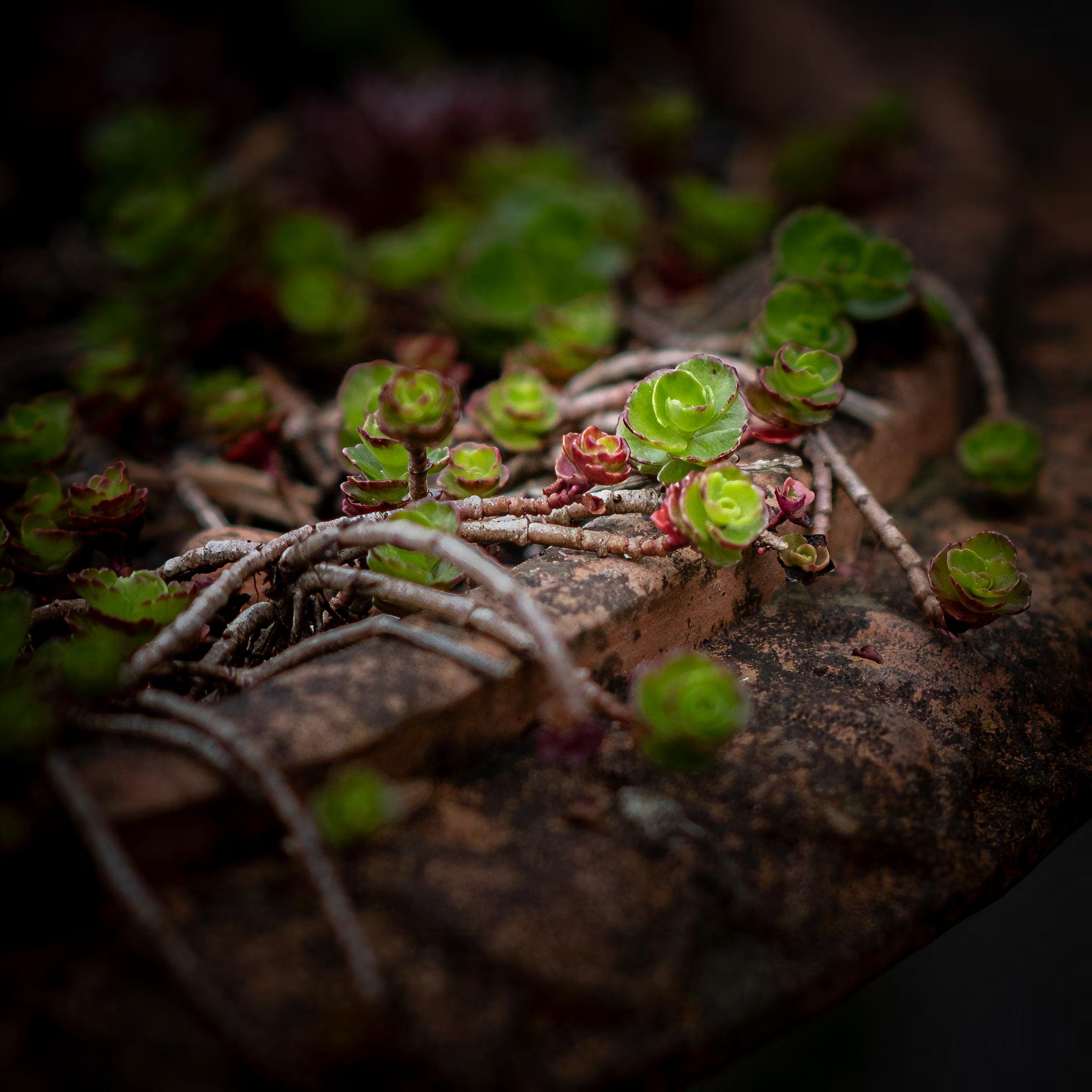
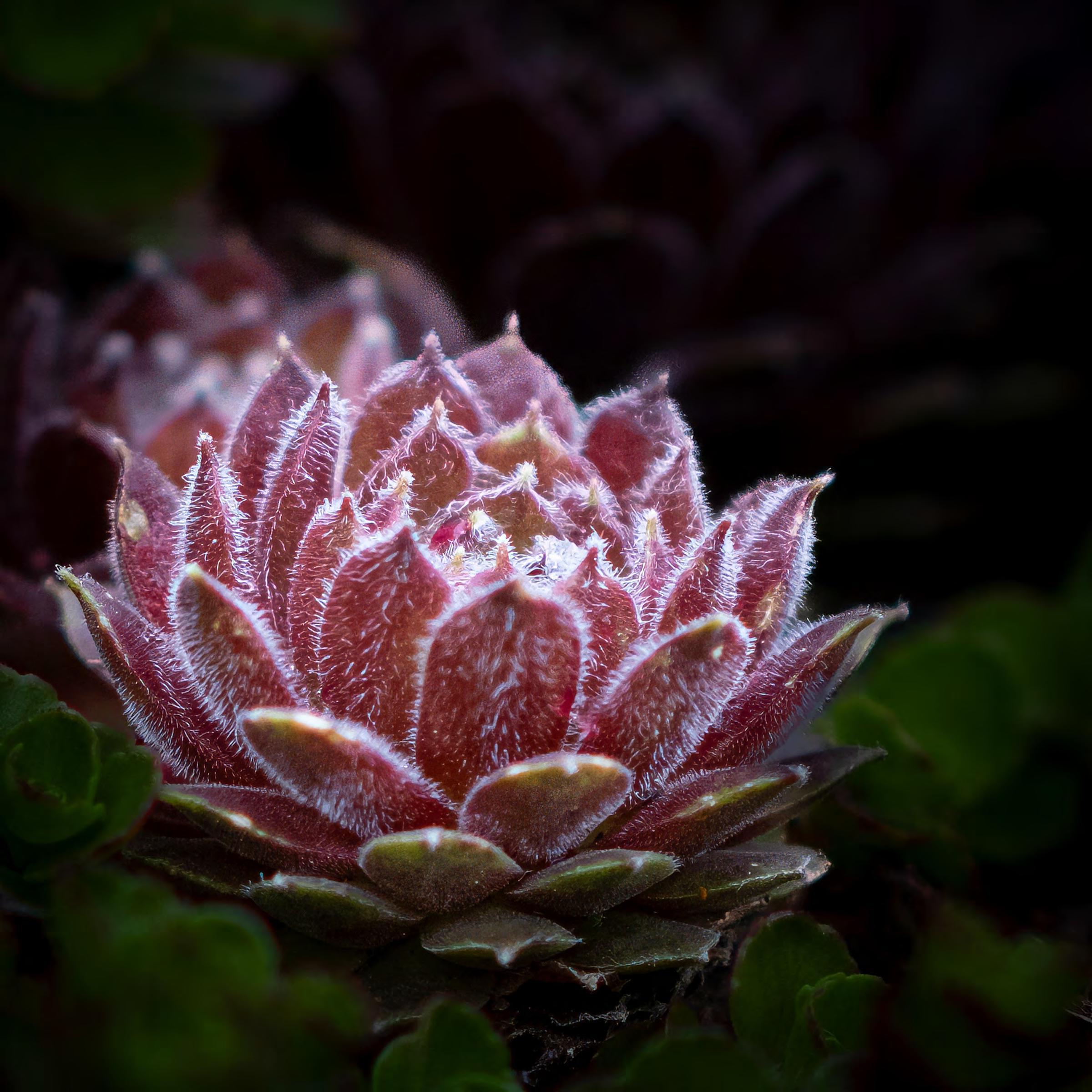

Succulent plants famed for their rosette shape and their ability to withstand harsh conditions.
Characteristics: Sempervivum forms dense mats of rosettes. Each rosette is monocarpic, meaning it flowers once and then dies, but is usually surrounded by many offsets that continue to grow. The leaves are thick and fleshy, often tipped with a distinctive colour or slight webbing.
Growth and Form: These plants are low-growing and spread by producing offsets (the 'chicks') that surround the main rosette (the 'hen'). Over time, they can form large clumps.
Flowers: The flowers rise on stalks above the rosettes in summer and can be pink, red, or yellow. They are star-shaped and quite appealing to pollinators.
Cultivation: Sempervivum is extremely easy to grow, requiring minimal care. They thrive in poor, well-drained soil and full sun, making them perfect for rock gardens, wall crevices, and green roofs. They are very drought-resistant, thanks to their succulent leaves.
Uses: Historically, Sempervivum has been grown on roofs in Europe, believed to ward off lightning and fire. This practice is rooted in ancient folklore where its presence on rooftops was thought to protect the house and its inhabitants.
Medicinal Uses: Traditionally, the plant has been used in folk medicine to treat skin conditions and inflammations, due to its astringent properties.
St. Patrick and Houseleek: There is a charming legend from Ireland that when St. Patrick arrived to Christianize the island, he introduced the Houseleek, planting it on roofs as a symbol of protection under the new faith. This tale links the plant with the Christian tradition of safeguarding one’s home and soul.
Charlemagne's Influence: Emperor Charlemagne, according to legend, decreed that Houseleeks should be grown on the roofs of all buildings in his empire to protect against lightning and sorcery, reinforcing the plant’s protective folklore across his territories.
Symbolism in Witchcraft: In some regions, Houseleeks were thought to have magical properties and were used in witchcraft and as a part of various pagan rituals intended to protect or to heal.

Characteristics: English Bluebells are known for their vibrant blue flowers that droop or nod to one side, typically forming a bell shape. Each flower has a sweet, subtle fragrance and the petals slightly curl back at the ends.
Growth and Form: These plants grow from bulbs and are perennial, meaning they return year after year. They usually bloom profusely in spring, forming dense carpets in woodlands and shady areas.
Habitat: Native to the United Kingdom, these flowers are found predominantly in ancient woodland ecosystems and along hedgerows, indicating the presence of longstanding forest conditions. They are adapted to moist, shaded environments and well-drained soils.
Cultural Significance: The English Bluebell is often associated with folklore and is thought to summon fairies in traditional tales. It is a beloved symbol of spring and is widely celebrated in British culture for its beauty and its indication of a healthy woodland.
Conservation Status: English Bluebells are protected under UK law. It is illegal to uproot the plants from the wild, and landowners are encouraged to conserve their natural habitats. This protection stems from concerns over habitat loss and the invasion of non-native species like the Spanish Bluebell (Hyacinthoides hispanica), which can hybridize with and potentially dilute the genetic stock of the native bluebells.
Symbol of Spring: English Bluebells are one of the first flowers to bloom in abundance in spring, covering woodlands in a vivid carpet of blue. They symbolize the awakening of nature and are a reminder of the cycles of renewal and growth that define the season.ng.
Folklore and Fairy Tales: Bluebells are deeply embedded in British folklore. They are often associated with fairies and are sometimes referred to as "fairy thimbles." It was believed that bluebells could call the fairies when rung and that a field of bluebells could be a dangerous place because it was full of spells and enchantments.
Literary Inspirations: The sight and scent of bluebells have inspired numerous British poets and writers. Emily Brontë, for example, mentioned bluebells in her poetry, capturing their ethereal beauty and their wild, untamed nature.
Protection in Folk Beliefs: Traditional beliefs held that wearing a garland of bluebells could compel the wearer to tell the truth. Additionally, bluebells were thought to ward off the "evil eye" and were used in spells for protection and honesty.



Leaf Characteristics: This variety is renowned for its delicate, deeply cut, almost feathery leaves, which are quite different from the more standard palmate leaves of other Japanese Maples. These intricate leaves can vary in colour from green to deep red and are particularly noted for their stunning visual texture.
Growth and Form: Laceleaf Japanese Maples typically grow in a cascading or weeping habit, making them excellent choices for dramatic landscaping focal points. They tend to be smaller and more compact than other varieties, often used in smaller gardens or even in large pots.
Colour Variation: The leaves usually start out with a bright green or red colour in the spring, deepening through the summer, and then turning vibrant shades of gold, orange, or crimson in the fall.
Cultivation: Like other Japanese Maples, they prefer well-drained soil and a protected location with partial shade to prevent leaf scorch, especially in hotter climates.
Uses: Due to their dramatic appearance and elegant form, they are frequently used in Japanese garden designs, container gardens, and as specimen trees in landscaped areas where their intricate form and foliage can be fully appreciated.
Visual Poetry and Miniaturization: The intricate and delicate structure of Laceleaf Japanese Maples contributes to the aesthetic of miniaturization, which is a core element in Japanese garden design. This approach reflects a broader philosophical idea: the garden as a microcosm of the larger natural world. The Laceleaf Maple, with its finely textured foliage and compact shape, is often used to simulate larger landscapes in a confined space, mimicking the appearance of full-sized trees from a distance.
Symbolism of Impermanence: Similar to other Japanese Maples, the Laceleaf variety embodies the concept of 'mono no aware', a Japanese term that acknowledges the transience of things. The changing colours of the leaves throughout the seasons remind viewers of the fleeting nature of beauty, which is a recurring theme in many Japanese artistic expressions.
Seasonal Highlight: With their dramatic seasonal transformations, Laceleaf Maples are also used to mark the passage of time within the garden. Their vibrant autumn colours can be a focal point for fall viewing—a practice known as 'momijigari', the Japanese tradition of viewing autumn leaves.

Characteristics: Hinoki Cypress is known for its dense, attractive foliage and its slowgrowing, pyramidal shape. The leaves are scale-like, dark green, and may have a slightly glossy appearance with a hint of golden or bronzy tips on new growth.
Growth and Form: This tree can grow quite large in the wild, reaching heights of up to 35 meters, but many cultivated varieties are much smaller, especially those used for bonsai or as ornamental plants in gardens.
Wood and Use: Hinoki wood is light and strong, with a rich fragrance that is highly prized. It is used for making traditional temples and shrines in Japan because of its resistance to rot and its fine grain.
Cultivation: It prefers moist, well-drained soils and a location where it can receive full sun to partial shade. While it is tolerant of pruning, which makes it a popular choice for shaped hedges and topiaries, Hinoki Cypress does not respond well to being cut back into old wood.
Symbolic Significance: In Japan, the Hinoki Cypress is considered a sacred tree, and it is often associated with purity and serenity. Its wood is used in the construction of temples, palaces, and baths, and it is also a popular material for making masu, traditional Japanese sake boxes.
Sacred Use in Shinto Shrines: Hinoki wood is considered sacred in Shinto, Japan's indigenous faith, and is the preferred material for building Shinto shrines and temples. Its use in these sacred structures is due to its durability, pleasant scent, and the belief that it purifies and wards off evil spirits. The wood's resistance to rot and insects also symbolizes permanence and purity, aligning with the Shinto focus on cleanliness and sanctity.
Symbolism in Japanese Gardens: In Japanese garden design, Hinoki Cypress is often used to create a sense of tranquillity and eternal beauty. These trees may be shaped into various forms through meticulous pruning, reflecting the Japanese aesthetic of controlled nature that symbolizes harmony and balance.
Imperial and Historical Connections: Historically, Hinoki wood was used extensively in the construction of Japanese castles and the homes of the nobility, including the famous Himeji Castle. Its use was a mark of high status and was often reserved for the most important and prestigious constructions.
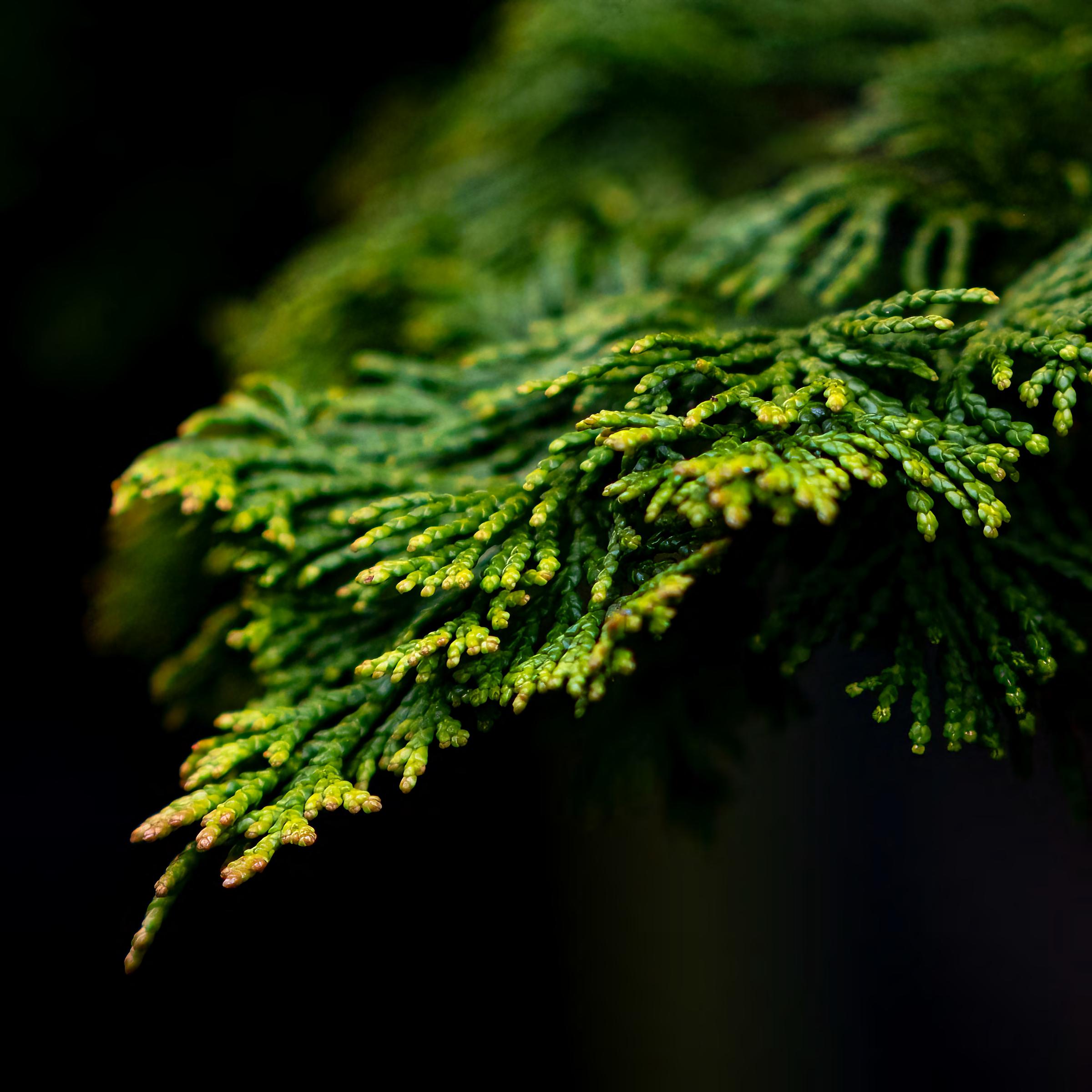
Photos taken at the Mount Venus Nursery, Mutton Lane, Tibradden Dublin, Ireland, D16 R972
Fuji X-T5, Viltrox 56mm f1.4 lens, photos processed in Lightroom Classic. All photos copyright Joe Houghton 2024.
Joe delivers photographic training to clubs all round the world - see his website at https://www. houghtonphoto.com
Text generated from ChatGPT prompts after uploading each image then asking 1) “Identify this plant and give me the latin name and details about the plant” and 2) “Give me cultural background and stories about this plant”.

